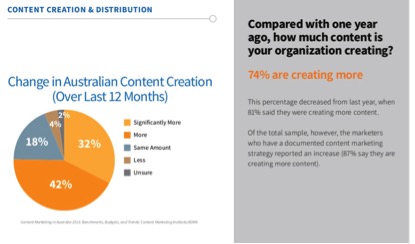We’ve all been there. A sale is lost because your frontline staff doesn’t know what’s going on in the rest of the company.
Like many people, I love to research online before making a decision on purchasing a product. Many brands have content marketing working for them online but forget to communicate the what, why and how of their content to key frontline staff making the sale.
Too many times I’ve walked into a store to make a purchase after doing online research to encounter extremely poor customer service. Ninety-nine per cent of the time I head back to my car and make my purchase from a competitor who provides a great customer experience. I’m not alone. According to RightNow Customer Experience Impact Report, 89% of consumers went to a competitor after a poor customer service experience.
Brands are spending thousands of dollars creating more and more content every day, but this effort is failing by not getting one simple detail correct. Engaging frontline staff in your strategy and content-creation efforts is key to the customer experience.
The latest research from the Content Marketing Institute shows 74% of Australian organisations are creating more content than last year. The question I have is at what expense?

I’ve lost count of how many times I’ve jumped online and engaged with a brand’s brilliant content only to go into the store and leave disappointed over poor service.
Below are four tips to help fix this problem.
- Understand your prospective customer’s buying journey
Too many brands are jumping straight into content creation for a number of different reasons without taking time to create a content marketing strategy. A good content marketing strategy will look at the journey your prospective buyer takes to make a purchase and will provide relevant, compelling content at each stage. If your online content is getting people through the door, you must educate and involve your sales staff in this process. They should already have a clear idea about what content the prospective customer has been exposed to. Most importantly, they should have a clear understanding of what content they need to present to close a sale.
- Education for Sales Staff
Great content helps make prospective clients walking in the door more prepared to make a purchase, but an uneducated frontline staff member can easily reverse that. Continue to educate your staff to ensure they are just as knowledgeable, if not more knowledgeable, than your content. Providing relevant, compelling and engaging information is the name of the game in content marketing. This doesn’t stop when the client walks through the front door, so provide that content to your staff too.
- Internal FAQ’s
One of the biggest problems Google and content marketing has created is that most customers come well-informed with a lot of knowledge about their intended purchase that they have researched online. 81% of consumers research online before making a major purchase. Consumers expect in-store staff to be well-educated about products and know the answer to all their questions to the same degree they can find the information online. If you’re not equipping your staff to have this knowledge you really are missing a big opportunity. Furthermore, all the effort and dollars your marketing department put into your content marketing is destroyed instantly. Provide regularly updated Frequently Asked Questions and the answers to customer-facing staff to educate them on how and what customers are searching. Quite often you will find customers ask the same or similar questions. Developing content specific for these questions and equipping staff with this content will help keep your customers happy and not walking to your competitor next door.
- Put your marketing team on the frontline
Too often we have marketing teams dictating what content we should provide or jumping on the bandwagon on the latest and greatest fad. Send your marketing manager and agency to spend some time at the purchase point to really understand the conversations that are happening. Most importantly, dig deep into understanding your target audience and their point of view.
Finally, content marketing, advertising or any other digital media will never, ever replace good old-fashioned service.
If you would like help in understanding your prospective buyers’ journey or communicating down to frontline staff, give us a call.
Image credit: Content Marketing in Australia: 2015 Benchmarks, Budgets and Trends by the Content Marketing Institute
